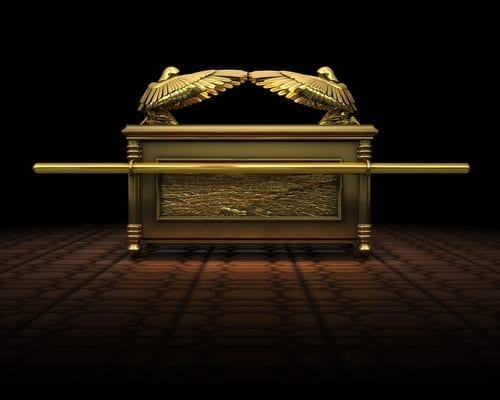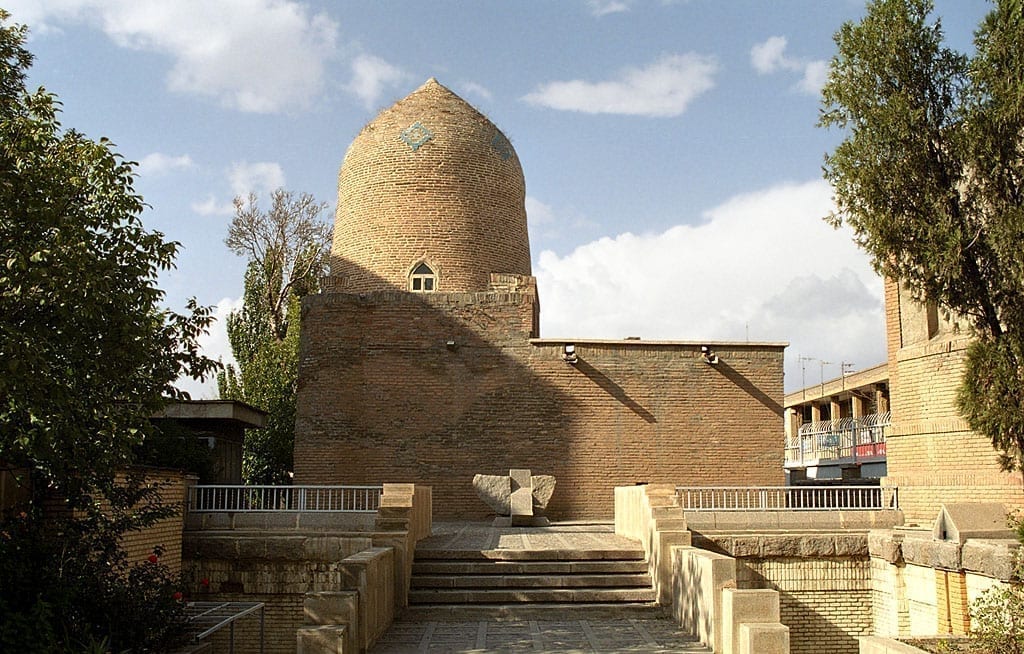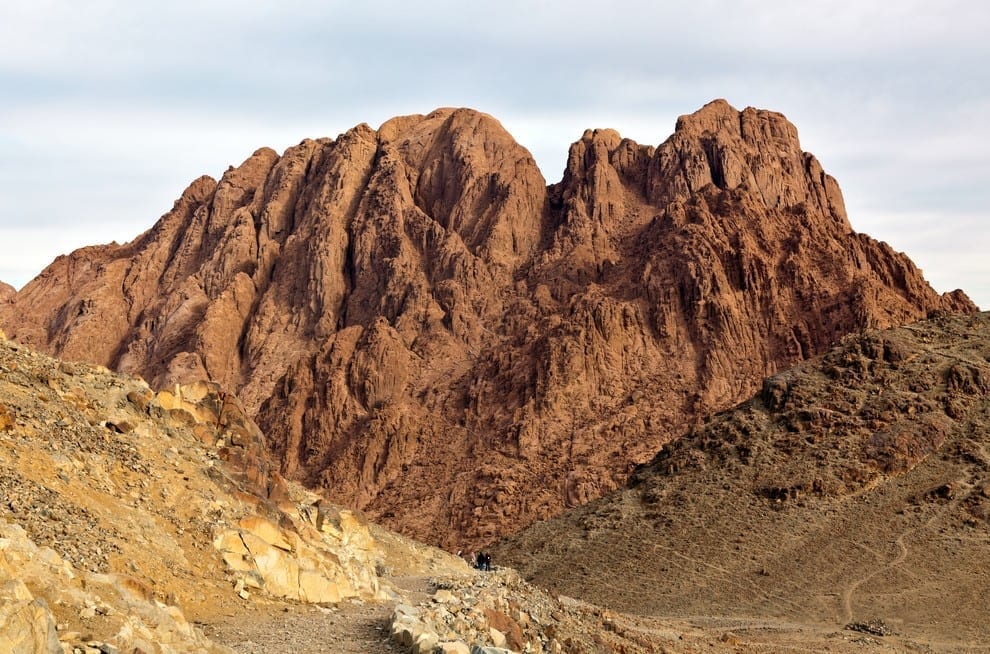“The truth is that our main guide was Scriptures. As an archaeologist, I can’t imagine any greater excitement than a Scriptural work in one hand and a digging trowel in the other.” (Yigal Yadin in his Hebrew-language book “Chatzor”, page 193).
In the last generation, with the burgeoning of archaeological excavations in lands where the people and great figures of the Bible lived, and the huge number — without precedent — of discoveries and artifacts which have come to light from those periods, the gross errors of all those “experts” who spoke confidently of the”impreciseness” of certain details related in the Torah have been shamefully exposed.
Things have reached the point where any archaeological excavation which is carried out in a place connected to an event that occurred in the Bible, reveals facts from that period which completely refute all the criticism which the various scholars had conjectured regarding the Biblical account of that event, while verifying the Biblical account in all its details. There is no difference if the criticism was over a small technicality[1] or referred to a large, highly significant event.[2] In any event and every situation, the Torah’s words proved to be reliable and exact down to the very last details.[3]
It is clear that in this limited framework we cannot go into detail about the large range and variety of artifacts that were discovered. One who wants to learn more about them can find them in the list of books which appear in the note below.[4] Here we will only bring several discoveries which apply to one of the most significant periods in the history of our people, the period when we were enslaved in Egypt.
This period includes 4 stages:
1. Immigration to Egypt because Joseph had been promoted viceroy in Pharaoh’s palace.
2. The enslavement after the death of Joseph.
3. The Ten Plagues which G-d sent against the Egyptians.
4. The Exodus from Egypt.
Let us view these four events through the mirror of archaeology, and how they parallel the Torah’s account.
Joseph’s promotion in Egypt (Gen. Chapter 41):
“And Joseph said to Pharaoh, ‘Pharaoh's dream is one. What God is going to do He has told Pharaoh… So now, let Pharaoh seek out an understanding and wise man and appoint him over the land of Egypt… And let them collect all the food…’ So Pharaoh said to his servants, ‘Will we find [anyone] like this, a man in whom there is the spirit of God?’ Then Pharaoh said to Joseph… And Pharaoh removed his ring from his hand and placed it on Joseph's hand, and he attired him [with] raiment of fine linen, and he placed a golden chain around his neck. And he had him ride in his chariot of second rank, and they called out before him, ‘[This is] the king's patron,’ appointing him over the entire land of Egypt.”
The Bible World Encyclopedia (page 207) brings a citation from an Egyptian papyrus (A. Harris Papyrus, 57 columns, lines 1-9) which talks about a man from the Land of Israel who became prominent in Egypt, and was considered a very wise man whose wisdom the Egyptian people utilized.
According to the date of the papyrus, researchers determined that the A. Harris Papyrus relates to the Torah episode (Gen. Chapter 41) of Joseph’s promotion as viceroy of Egypt, as recorded in a report by a contemporary Egyptian.
Here is a verbatim quote from the book Bible as History (page 91):
“Potiphar was the name of the Egyptian to whom Joseph was sold (Gen. 37:36). It is a thoroughly characteristic native name. Joseph's elevation to be viceroy of Egypt is reproduced in the Bible exactly according to protocol. He is invested with the insignia of his high office, he receives the ring, Pharaoh's seal, a costly linen vestment, and a golden chain (Gen. 41:42). This is exactly how Egyptian artists depict this solemn ceremony on murals and reliefs.”
The Jewish People Enslaved in Egypt (Exodus 1:13)
“So the Egyptians enslaved the children of Israel with back breaking labor. ”
In a rock tomb of one of the rulers in Pharaonic Egypt west of the royal city of Thebes are drawings in which slaves make bricks under the supervision of taskmasters. What appears in those pictures is analyzed in “Bible as History” (page 108):
“The most notable feature being the light-skinned workmen, who are clad only in linen aprons. A comparison with the dark-skinned overseers shows that the fair-skinned men are probably Semites, but certainly not Egyptians.”
He also cites there a translation of hieroglyphics which appear in one of the sketches, according to which one of the Egyptian overseers say: “The rod is in my hand. Be not idle.” (See more about these pictures and how they parallel the Torah’s account in the book by Prof. A. Sh. Yehuda “Eber and Arab”, page 15)[5]
The Ten Plagues (Exodus Chapter 7-12)
A papyrus was discovered which confirms the facts of the Plagues that hit Egypt. The papyrus was written by an Egyptian of that period called Ipuwer, and was purchased by the Leiden Museum in Holland. Its catalogue number is 344. The papyrus was written on both sides, and contains 17 pages. Most pages have 14 lines. From the first page, only a third is intact. Pages 9 and 16 are in bad shape, and all the pages are damaged at their upper and lower margins. Despite that, what remains is sufficient to get a clear picture concerning part of the catastrophe which the writer is reporting on. He speaks about ten catastrophes!
Prof. Emanuel Velikovsky was the first to realize the similarity between what Ipuwer the Egyptian was describing and what appears in the Book of Exodus.
It is clear from the Egyptian writer’s text that he is not writing a song or a prophecy about the future, but a grief-stricken and painful description of unusual events that he witnessed. According to Prof. Velikovsky, a known expert of the chronology of the Egyptian kingdoms, this document belongs exactly to the period when according to the Jewish tradition the Israelites left Egypt, and the Ipuwer papyrus was a report “from the scene.”
An Altar Which Fits the Description in the Book of Joshua and in the Tractate of Zevachim Was Found on Mt. Ebal
An altar that fits the description in the Talmudic tractate of Zevachim and which also fits the measurements of the altar described in the Book of Joshua, Chapter 8 and Deut. Chapter 27 — is the most significant and important discovery made in the fourth excavation period on Mt. Ebal.
This was revealed by Adam Zertal in a press conference at the end of this week on Mt. Ebal, after concluding the short period of excavations that continued for a month.
Adam Zertal, from Haifa University, stood at the head of a delegation of dozens of diggers from Israel and abroad, who stayed in the Shavie Shomron Midrasha.
With the discovery of the altar, we now have another confirmation of the Biblical tradition — says Adam Zertal, adding that this is a solitary altar and there is none like it in Israel. There were no statues in the place, which strengthens the assumption that this was a site of Israelite worship during the period when they settled the land, which was in the second half of the 13th century B.C.E., the period when they left Egypt.
One finding which confirmed the date as being during the time of the Exodus, was an Egyptian scarab with a geometric ornament, which was found in the filling of the altar in Mt. Ebal. Also, mincha-offering vessels of stone were preserved in 60 round and square containers. It appears that the worship site of Mt. Ebal served as a place of central sacrifice-offering connected to the altar and pilgrimages.
Notes and Sources
[1]. See for example, the Hebrew Encyclopedia, Vol. 8 (end of page 918) that for a long period of time, researchers didn’t accept the statement in Breishit 12:16 that among the animals which Abraham received from Pharaoh was a camel. The researchers believed that the camel didn’t exist in Egypt until the 14th century B.C.E. Then recently, proofs were found of its existence there from an earlier period. (Camel bones were found in archaeological diggings, as well as seals and images in which there are pictures of camel-riders. See the book Emet M’Eretz Yitzmach, page 32).
[2]. We should note the sharp words which appear in the Hebrew Encyclopedia Vol. 1 (page 286): “All these hypotheses (of those who denied the existence of the Patriarchs) lack any basis in reality. The ancient documents that were recently discovered in Mesopotamia, particularly those of the cities of Mari and Nuzi, have allowed us to recognize… The archaeological discoveries completely conform with the Jewish tradition according to which the forefathers came from Haran.”
[3]. The exact parallelism between the discovered artifacts and all the details related in the Torah, also incidentally prove in certain cases that the different accounts of that event by other nations are incorrect. Even more, even in cases where the main story is about a different nation, the findings show that the account related in the Torah was the accurate one and not the one retold by that nation! (See for example: Nitzotzot (#3) mentions that Berossus relates that Sannecherib’s son killed his father during an uprising. This report also exists in the Babylonian chronicles. This contradicts the Biblical account (Kings II 19:37) which relates that the two sons of Sennacherib, Adramelech and Sharezer, slew him with a sword when he was bowing down to his idol, and they fled, and his son Esarhaddon reigned in his stead. In recent decades, part of the Esarhaddon prism was discovered in which he relates that his brothers rebelled against their father Sennacherib and slew him and fled. This finding fascinated the researchers, considering the importance of this subject in Assyrian Babylonian history.)
[4]. “Emet M’Eretz Titzmach” by Rabbi Yoel Schwartz. “The Cradle of Civilization” by Time Life. “Yechudo v’Kadmuto shel Sefer Breishit” by Y. M. Grintz. “Chatzor” by Yigal Yadin. “The Bible as History” by Werner Keller. “Rivers in the Desert: A History of the Negev” by Nelson Glueck, “All About Archaeology” by Ann T. White, “Kadmoniyot” by Rabbi Aaron Marcus. “Dorot Bamikra” by Dr. Immanuel Wilkovsky. See also the books “Habriah V’hamabul”, Olomot Batohu”, “Yetziat Mitzrayim V’Matan Torah”, “Zeh Keli”, “Eber V’Arab”, “Olamot Nifgashim” (pg. 60) and more.
Interesting declarations by researchers and archaeologists concerning archaeological testimonies that completely debunk the old theories of Bible critics can be found in these books: “The Archaeology of Palestine: From the Stone Age to Christianity” by William Foxwell Albright (page 143), “Ebla” by Chaim Bermet and Michael Weizman (page 67), “Historia Shel Am Yisroel B’tekufat Ha’avot” by Efraim Speiser (Vol. 2, page 79), Machanayim 31, article by Prof. Benjamin Mazar (page 21) and more.
[5]. It is timely to cite the journalistic article which appeared in the Yom L’yom weekly under the title “The Descendants of the ‘Innocent Cossack’ Demand Restitution”: Who would believe that echoes of the ancient dispute between Geviha ben Pesisa and the Egyptians, which was successfully adjudicated before Alexander of Macedonia, would return to the headlines in the Egyptian press after more than a thousand years? In 1986, the Egyptians mentioned that the Israelites owed them a huge debt — an amount of close to forty billion dollars. This debt was explained to be the value of the gold that the Israelites took out of Egypt during the Pharaonic period, after having asked their Egyptian neighbors for silver and gold vessels and clothes. They used the gold to make the Golden Calf at the foot of Mt. Sinai.
This really took place. Our newspapers also publicized the article a decade ago. The Egyptian media relied on the reckoning of an expert historian of that period, Ahmad Bahajet, a known Egyptian historian who wrote the book “Moses and Pharaoh” about the account of the Exodus. The historian took upon himself the task of calculating the demanded restitution with great seriousness. He spent many days at the archives of the Pharaonic priest of that period, Nap-Hotep, who was Pharaoh’s bookkeeper. His calculations take into consideration that the Israelites took pure gold of a very heavy weight which the Egyptian authorities of that period hadn’t managed to recoup from them because they had left so quickly due to G-d’s miracles and wonders. The lack of this huge quantity of gold, upon which the ancient East relied, undermined the Pharaonoic economy and with time, also caused the disintegration of the kingdom.
The semi-official Egyptian daily, El Gomhorriya, says that it relies on the conclusions of Mr. Bahajet. In the introduction to the conclusions that he published, Bahajet blesses the Jewish people on the occasion of their Holiday of Freedom (Passover) and claims that this holiday should be adopted by all mankind because the Pharaoh of the Exodus was a cruel ruler, and a tyrant and oppressor.
“However,” Bahajet claims, “There is a catch. The Israelites took with them spoils from Egypt and made the Golden Calf from it. In our opinion, a debt is a debt. So Israel has to repay the Egyptian Treasury today — not including interest because interest is forbidden in Islam). And Israel shouldn’t forget that it says ‘the sins of the fathers are on the sons…’
Israel’s Arab language radio channel, which advocates for Israel to Arab countries, quickly replied to the Egyptian claim. The man who is responsible for public relations, Shaul Menashe, said that if the Egyptians are already bringing up this subject, then Israel has its own calculation which deserves restitution: “The Israelites served Pharaoh with backbreaking labor for 430 years for which they received no wages. Pharaoh enslaved not only the men but also the women. So the number of slaves was in the hundreds of thousands of people. Therefore, honorable Mr. Bahajet, go back and calculate the wages that Egypt has to pay the Israelites for their work, and don’t forget to add interest and linkage for over 3,000 years. And when you finish offsetting that calculation from your own, make sure your government pays us back the remainder.”
Here is the story as the Talmud tells it (Sanhedrin 91b): “The Egyptians again came to litigate against the Jews before Alexander of Macedonia. They told him: ‘The verse says “and G-d made the people find favor in the Egyptians’ eyes and they lent to them.” Give us back the silver and gold that you took from us!’ Geviha ben Pesisa told the sages: Permit me to go and respond to them before Alexander. If they win me, tell them, ‘You won a simple fellow.’ And if I win them, tell them ‘The Torah of our Teacher Moses won you.’ They gave him permission and he went to litigate with them. He told them, ‘What is your proof?’ They said: ‘From the Torah.’ He said, ‘I will also bring a proof from the Torah. It says “The Israelites lived in Egypt four hundred and thirty years.” Give us our salary for the labor of the 600,000 Israelites that you enslaved in Egypt for 430 years…’ They told him, ‘Give us three days.’ He gave them time, and they looked for an answer but didn’t find one. They immediately abandoned their planted fields and vines and fled. And that year was a Shemitta year.”
Adapted from “Journey to the Truth 2” by Rabbi Zamir Cohen





